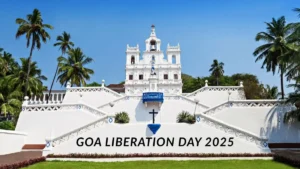Guru Gobind Singh Jayanti, also known as Prakash Utsav, is a significant Sikh festival commemorating the birth anniversary of Guru Gobind Singh Ji, the tenth and last Sikh Guru. This auspicious day is celebrated with immense joy and fervour by Sikh communities around the world.
Guru Gobind Singh Jayanti, Ascension to Guruship
Declaration as Guru: At the age of nine, in 1676, Guru Gobind Singh was declared the tenth Guru of Sikhs after the martyrdom of his father, who refused to convert to Islam under the Mughal Emperor Aurangzeb.
Leadership and Teachings: Despite his youth, Guru Gobind Singh demonstrated exceptional leadership, guiding the Sikh community through challenging times.
The Formation of the Khalsa
- Establishing the Khalsa Panth: One of his most notable achievements was founding the Khalsa Panth in 1699, a community of baptized Sikhs dedicated to living a life of courage, sacrifice, and service.
- The Five Ks: He introduced the five Ks – Kesh (uncut hair), Kangha (comb), Kirpan (sword), Kaccha (undergarment), and Kara (steel bracelet), symbolizing the ideals of the Khalsa.
Later Life and Legacy of Guru Gobind Singh
Literary Contributions: Guru Gobind Singh was also a prolific poet and writer, contributing significantly to Sikh literature.
Final Declaration: Before his passing in 1708, he declared the Guru Granth Sahib, the sacred Sikh scripture, as the eternal Guru.
Historical Reverence
Guru Gobind Singh Ji was born on December 22, 1666, in Patna Sahib, Bihar. He succeeded his father, Guru Tegh Bahadur Ji, at the young age of nine, becoming the spiritual leader of the Sikhs. Guru Gobind Singh Ji played a pivotal role in shaping Sikhism, emphasizing the values of courage, sacrifice, and equality.
Significance of Guru Gobind Singh Jayanti
Guru Gobind Singh Jayanti holds immense significance for Sikhs as it marks the birth of a visionary leader who not only strengthened the Sikh community but also stood against tyranny and injustice. Guru Gobind Singh Ji is renowned for establishing the Khalsa Panth, a community of initiated Sikhs, in 1699. The creation of the Khalsa symbolized the spirit of courage, selflessness, and devotion to righteousness.
Celebrations Around the World
Guru Gobind Singh Jayanti is celebrated with great enthusiasm and devotion by Sikhs globally. The festivities usually begin with early morning prayers at Gurudwaras, followed by processions known as Nagar Kirtans. These processions involve singing hymns, carrying the Guru Granth Sahib, and showcasing martial arts displays as a tribute to Guru Gobind Singh Ji, a skilled warrior.
Prayers and Katha
Special prayers and kirtans are organized at Gurudwaras, where devotees gather to listen to the teachings and life stories of Guru Gobind Singh Ji. Katha sessions narrate the Guru’s journey, emphasizing the values of equality, justice, and standing against oppression. The atmosphere is filled with spiritual fervour and a sense of unity.
Langar Seva
A significant aspect of Guru Gobind Singh Jayanti celebrations is the tradition of Langar. In this community kitchen service, volunteers come together to prepare and serve free meals to everyone, regardless of caste, creed, or religion. This practice reflects the Guru’s teachings of equality and selfless service.
Gatka Performances
Gatka, the traditional martial art form associated with Sikhism, takes centre stage during Guru Gobind Singh Jayanti celebrations. Sikhs, young and old, participate in Gatka performances, showcasing their agility and strength as a tribute to the warrior spirit exemplified by Guru Gobind Singh Ji.
Social Service Initiatives
In the spirit of selfless service, many Sikh communities organize blood donation camps, medical check-up camps, and other charitable activities around Guru Gobind Singh Jayanti. This reflects the Sikh principle of “Sarbat da Bhala,” meaning the well-being of all.
Important Questions Related to Exams
Q1. When was Guru Gobind Singh declared the tenth Sikh Guru?
Q2. What are the ‘Five Ks’ introduced by Guru Gobind Singh in Sikhism?
Q3. What year did Guru Gobind Singh find the Khalsa Panth?
Q4. Which scripture did Guru Gobind Singh declare as the eternal Guru before his passing?
Q5. What is the birth date of Guru Gobind Singh Ji?
Q6. Guru Gobind Singh Ji ascended to Guruship after the martyrdom of which Guru?
Q7. What is the traditional martial art form associated with Guru Gobind Singh Jayanti celebrations?
Q8. Which city was the birthplace of Guru Gobind Singh Ji?
Kindly share your responses in the comment section.




 International Human Solidarity Day 2025:...
International Human Solidarity Day 2025:...
 Goa Liberation Day 2025: History, Signif...
Goa Liberation Day 2025: History, Signif...
 Important Days in December 2025, Nationa...
Important Days in December 2025, Nationa...







